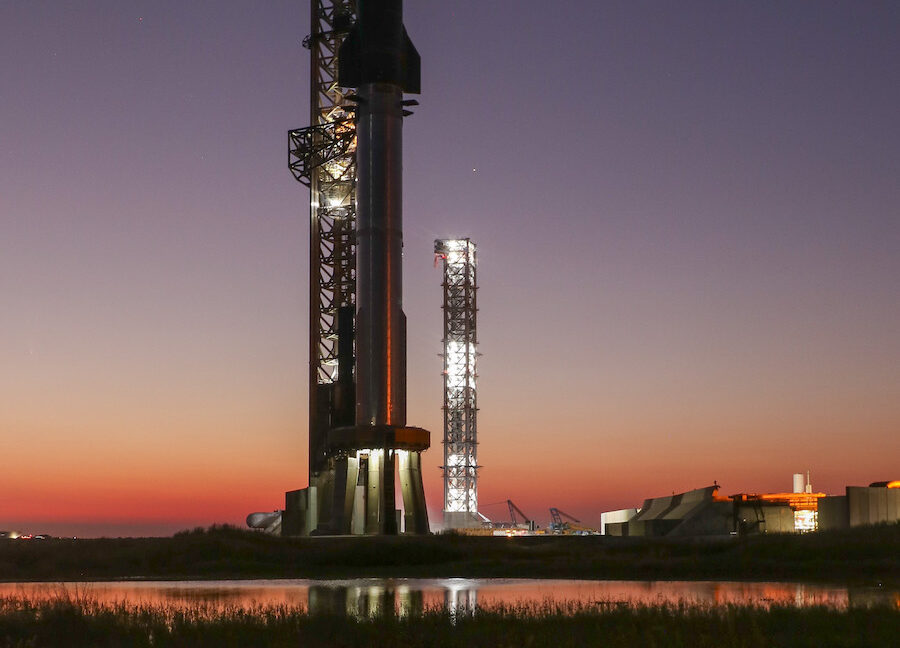ARSTECHNICA.COM
FAA green-lights Starship launches every other week from Starbase
Green light go
FAA green-lights Starship launches every other week from Starbase
If SpaceX can clean up Starship's reliability issues, the company is free to fly.
Eric Berger
–
May 6, 2025 2:46 pm
|
30
Starship and Super Heavy stand 397 feet (121 meters) tall.
Credit:
Stephen Clark/Ars Technica
Starship and Super Heavy stand 397 feet (121 meters) tall.
Credit:
Stephen Clark/Ars Technica
Story text
Size
Small
Standard
Large
Width
*
Standard
Wide
Links
Standard
Orange
* Subscribers only
Learn more
Although we are still waiting for SpaceX to signal when it will fly the Starship rocket again, the company got some good news from the Federal Aviation Administration on Tuesday.
After a lengthy review, the federal agency agreed to allow SpaceX to substantially increase the number of annual launches from its Starbase launch site in South Texas. Previously, the company was limited to five launches, but now it will be able to conduct up to 25 Starship launches and landings during a calendar year.
"The FAA has determined that modifying SpaceX’s vehicle operator license supporting the increased launch and landing cadence of the Starship/Super Heavy launch vehicle would not significantly impact the quality of the human environment," states the document, known as a Mitigated Finding of No Significant Impact. This finding was signed by Daniel P. Murray, executive director of the FAA's Office of Operational Safety.
This ruling follows a draft finding issued six months ago that indicated this would be the final outcome.
Assessing all of the impacts
Among the impacts considered were increased trucking operations to deliver water and various propellants needed to support Starship launches. An earlier analysis by the FAA found that, to support a cadence of 25 launches a year, the vehicle presence on State Highway 4 to Boca Chica Beach will grow from an estimated 6,000 trucks a year to 23,771 trucks annually.
Because of this, the FAA is requiring SpaceX to undertake dozens of mitigating actions. For example, for trucks, it has sought to reduce employee miles driven on the primary artery leading to the Starbase launch site.
"The Proposed Action would increase annual truck traffic, but mitigation measures like employee shuttles and limiting water truck deliveries to daytime hours would help reduce traffic impacts to wildlife," the FAA document states.
The FAA considered all manner of fish, wildlife, and environmental impacts, as well as those that could affect resources for residents of Brownsville and other nearby communities. For example, the FAA found that the increased water use would not affect supplies available for the area's residents. "While water use for launches would increase by 10.27 million gallons annually, this represents only 0.1% of the City of Brownsville’s 2018 usage and remains well within capacity," the document states.
No firm date for flight test 9
Although the new finding permits SpaceX to significantly increase its flight rate from South Texas, the company still has work to do before it can fly Starship again.
The company's engineers are still working to get the massive rocket back to flight after its eighth mission broke apart off the coast of Florida on March 6. This was the second time, in two consecutive missions, that the Starship upper stage failed during its initial phase of flight. The FAA is still investigating this mishap and has not yet issued a launch license for a ninth test flight.
After two consecutive failures, there will be a lot riding on the next test flight of Starship. It will also be the first time the company attempts to fly a first stage of the rocket for a second time. The stage designated for the upcoming test flight, Super Heavy "Booster 14," flew successfully on the rocket's seventh test flight in January 2025. The upper stage, "Ship 35," has undergone test firings at Starbase, but there may have been some issues during this process. SpaceX has not definitively said the ship is ready to fly.
However, according to some sources, if additional testing of this upper stage goes well, Starship could launch as early as May 19. This date is also supported by a notice to mariners, but it should be taken as notional rather than something to be confident in.
Eric Berger
Senior Space Editor
Eric Berger
Senior Space Editor
Eric Berger is the senior space editor at Ars Technica, covering everything from astronomy to private space to NASA policy, and author of two books: Liftoff, about the rise of SpaceX; and Reentry, on the development of the Falcon 9 rocket and Dragon. A certified meteorologist, Eric lives in Houston.
30 Comments
